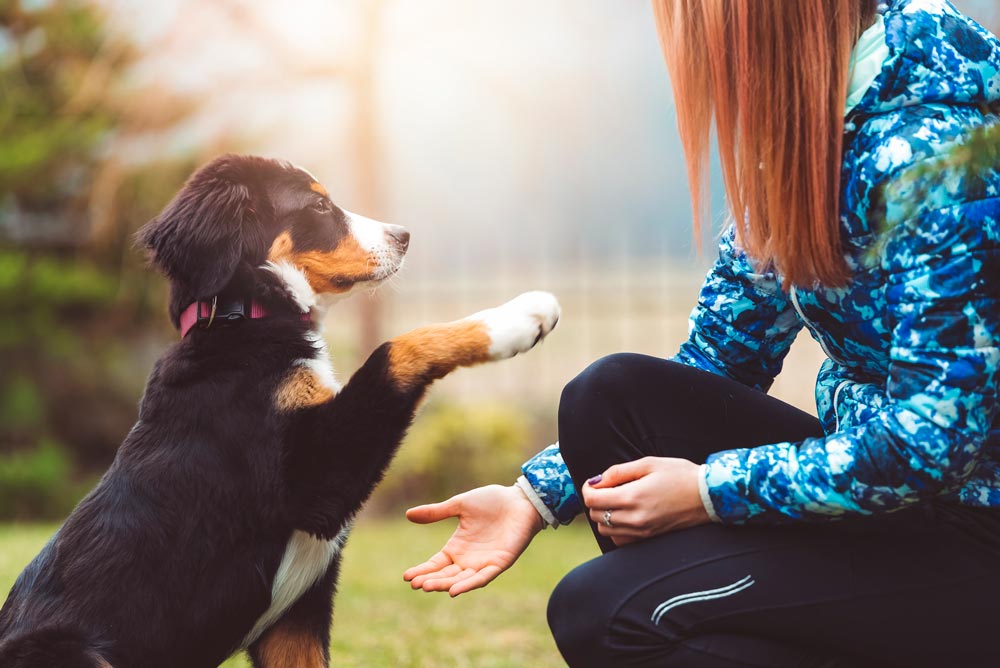Congratulations on your new puppy! Training your furry friend is an essential and rewarding task that will help them become a well-behaved and beloved member of your family. Here are 15 tips to get you started on the right track:
1. Start training as soon as you bring your puppy home.
Starting training as soon as you bring your puppy home has numerous benefits for both you and your furry friend. Here are a few reasons why starting your training early is very important:
- Teaching a puppy good habits is easier than breaking bad ones. The earlier you start the training, the easier it will be to establish good habits and prevent bad ones from forming.
- Puppies have shorter attention spans. The younger your puppy is, the shorter their attention span will be. This means they are more likely to stay focused and learn quickly during training sessions.
- Training helps with bonding. Training your puppy provides you an opportunity to spend quality time with them and build a strong bond.
- It sets the tone for the future. Training early will set the tone for your puppy’s behavior as your pup grows into an adult dog. It’s much easier to prevent bad habits from forming than to break them later.
- It helps prevent behavior problems. Proper training can help prevent common behavior problems such as excessive barking, chewing, and jumping.
- It helps keep your puppy safe. Training your puppy with basic obedience commands such as “sit,” “stay,” and “come” can help keep them safe and out of harm’s way.
In short, starting training as soon as you bring your puppy home will help you establish a strong bond, prevent bad habits from forming, and set the tone for the future. It’s an investment in your puppy’s future that is well worth the time and effort.
2. Use Positive Reinforcement Training.
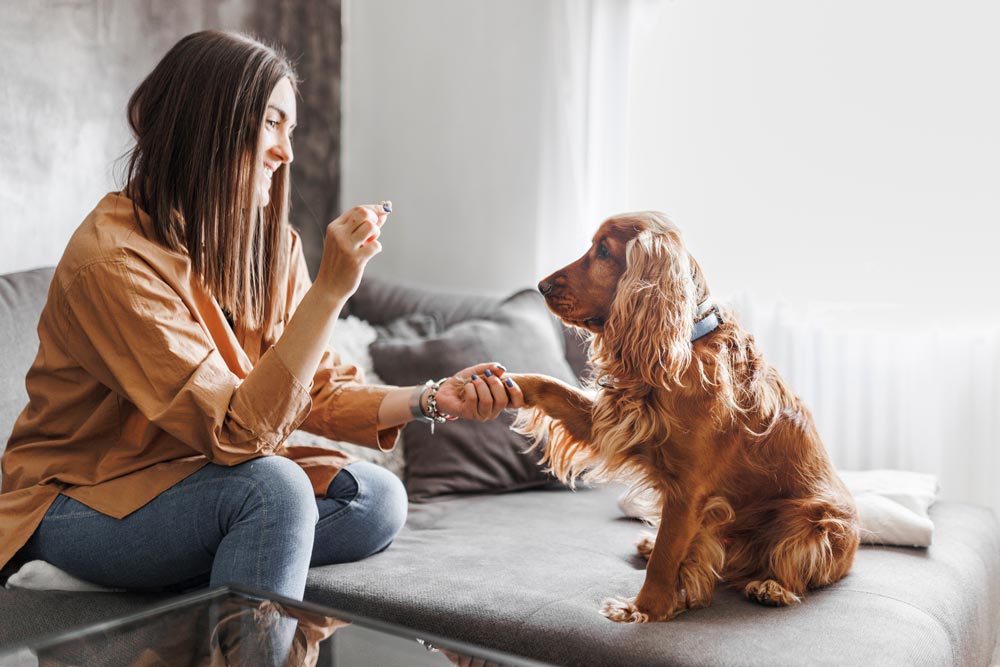
Positive reinforcement training is a method of training that involves rewarding a dog for good behavior. This can be in the form of treats, praise, or affection. Positive reinforcement training aims to increase the likelihood that a specific behavior will occur again in the future by rewarding the dog every time they exhibit that behavior.
There are multiple benefits to using positive reinforcement training on your puppy. Here are a few:
- It’s effective. Research has shown that positive reinforcement training is an effective way to teach dogs new behaviors and habits.
- It’s humane. Positive reinforcement training does not involve punishment or physical corrections, making it a humane training method.
- It strengthens the bond between you and your puppy. When you consistently reward your puppy for good behavior, it reinforces the bond between you and helps create a positive relationship.
- It’s fun. Training your puppy with positive reinforcement can be a fun and enjoyable activity for you and your furry friend.
- It encourages good behavior. By consistently rewarding good behavior, you can help your puppy learn what behaviors are desirable and encourage them to repeat those behaviors in the future.
Positive reinforcement training is a humane, effective, and fun way to train your puppy. By consistently rewarding good behavior, you can help your puppy learn new habits and strengthen the bond between you.
3. Keep training sessions short and fun.
Puppies have short attention spans, so it’s essential to keep training sessions short and fun to keep them engaged and motivated. Here are a few tips for making training sessions enjoyable for your puppy:
- Keep sessions to about 15 minutes. Puppies can get easily distracted, so it’s best to keep training sessions to about 15 minutes. This will help your puppy stay focused and avoid becoming bored or frustrated.
- Use toys and games to make training more fun. Using toys and games during training can make the experience more enjoyable for your puppy and help keep them engaged.
- Vary the training exercises. Mixing up the training exercises can help keep your puppy interested and prevent boredom.
- Use positive reinforcement. Rewarding your puppy with treats, praise, and affection for good behavior will help make training more enjoyable and encourage them to participate.
By keeping training sessions short, using treats and toys as rewards, and using positive reinforcement, you can make training more fun for your puppy and help them stay engaged and motivated.
4. Use the same commands consistently.
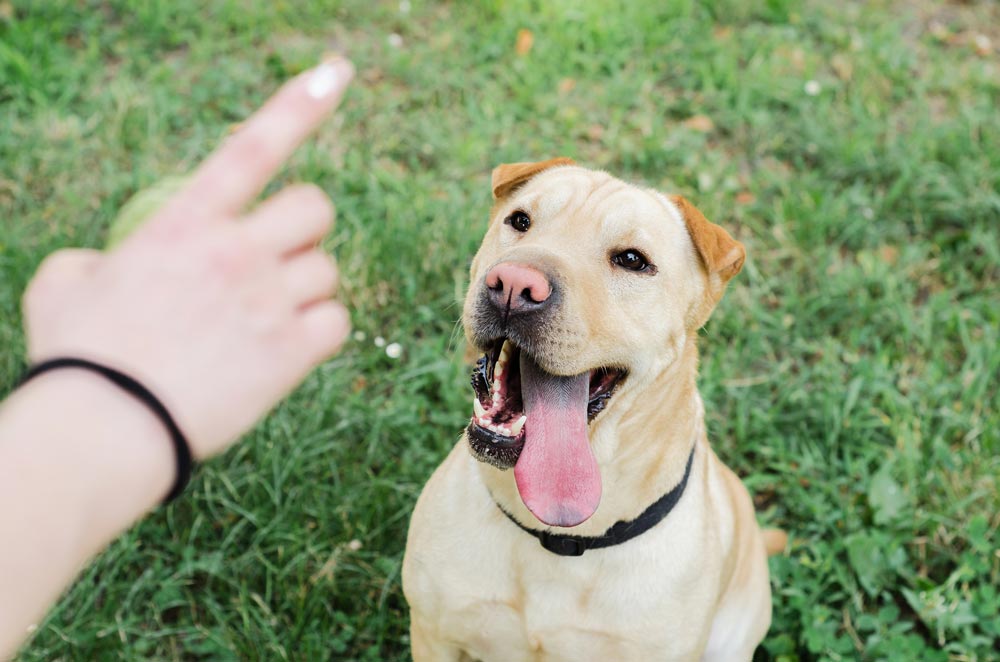
Using the same commands consistently while training your puppy is essential to effective training. Here are a few reasons why consistency is key:
- It helps your puppy understand what you want. Using the same words and hand gestures every time you give commands will help your puppy know what you expect from them.
- It avoids confusion. If you use different words or hand gestures for the same command, your puppy may need clarification and help to understand what you want.
- It reinforces the behavior you want. By consistently using the same commands and rewards, you can reinforce the behavior you want and increase the likelihood that your puppy will repeat it in the future.
- It helps prevent bad habits. Using the same commands consistently will help prevent bad habits from forming and make it easier for your puppy to learn and understand what you expect from them.
Using the same commands consistently while training your puppy is vital for helping them understand what you want, avoiding confusion, reinforcing good behavior, and preventing bad habits from forming. Being consistent can set your puppy up for success and make the training process more effective.
5. Keep a consistent training schedule.
Keeping a consistent training schedule with your puppy is essential to effective training. Here are a few reasons why consistency is key:
- It helps your puppy learn faster. By consistently training your puppy at the same time each day, they will learn faster and retain what they have learned more easily.
- It reinforces good habits. Consistently training your puppy at the same time each day will help support good habits and make it easier for them to understand what you expect from them.
- It helps prevent bad habits. You can consistently train your puppy to prevent bad habits from forming and correct any undesirable behaviors before they become ingrained.
- It helps with bonding. Consistently training your puppy allows you to spend quality time with your puppy and strengthen the bond between you.
Keeping a consistent training schedule with your puppy is essential for helping them learn faster, reinforcing good habits, preventing bad habits, and bonding with your furry friend. By being consistent, you can set your puppy up for success and make the training process more effective.
6. Gradually increase the difficulty of training exercises.
Increasing puppy training exercises’ difficulty is an essential aspect of effective training. Here are a some reasons why it’s important to increase the difficulty gradually:
- It helps keep your puppy engaged and motivated. As your puppy becomes more skilled at training exercises, gradually increasing the difficulty will help keep them challenged and engaged.
- It helps prevent boredom. If training exercises are easy for your puppy, they may become bored and lose interest in training. Gradually increasing the difficulty will help keep them interested and motivated.
- It helps your puppy learn new skills. By gradually increasing the difficulty of training exercises, you can help your puppy learn new skills and continue to progress in their training.
- It helps your puppy retain what they have learned. By gradually increasing the difficulty, you can help your puppy keep what they have learned and continue to build on their skills.
Gradually increasing the difficulty of puppy training exercises is vital for keeping your puppy engaged and motivated, preventing boredom, and helping them learn new skills. By gradually increasing the difficulty, you can help your puppy continue progressing in their training and retain what they have learned.
7. Be patient.
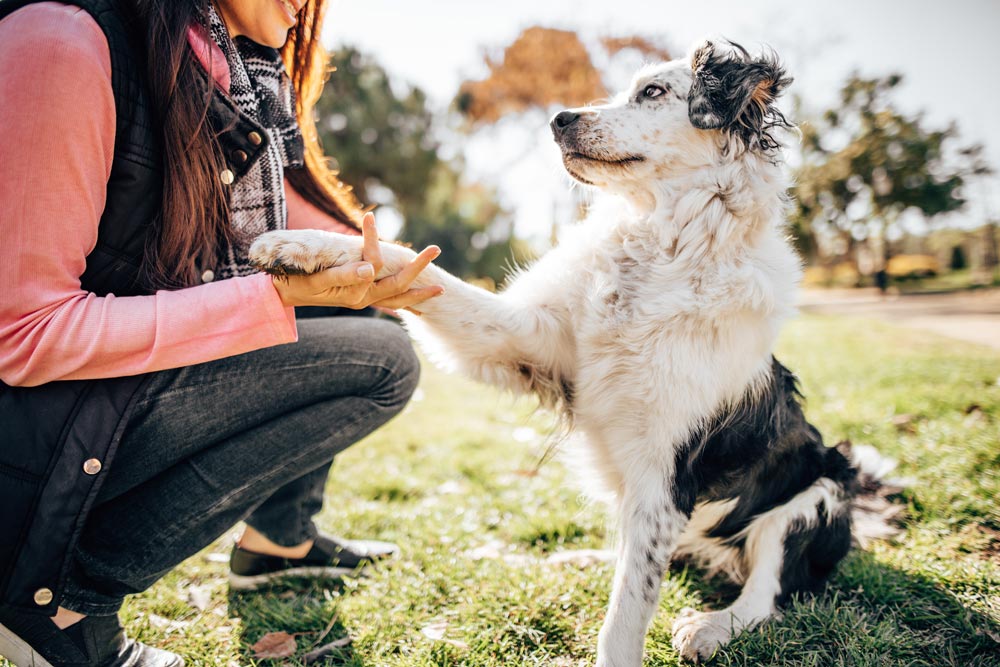
Training your puppy takes time and consistency, and it’s essential to be patient during the process. Here are a few benefits of being patient when training your puppy:
- It helps prevent frustration. Being patient when training your puppy can help prevent you from getting frustrated and losing your temper. Frustration can lead to harsher training methods and may damage the bond between you and your puppy.
- It helps your puppy learn at their own pace. Puppies learn at different rates, and being patient allows your puppy to learn at their own pace without feeling rushed or overwhelmed.
- It helps prevent bad habits from forming. If you get frustrated and give up on training, it can lead to bad habits forming and make it harder to correct undesirable behaviors in the future.
- It helps improve the bond between you and your puppy. Being patient during training can help create a positive and enjoyable experience for both you and your puppy, strengthening the bond between you.
Patience when training your puppy is essential for preventing frustration, allowing your puppy to learn at their own pace, preventing bad habits from forming, and improving the bond between you and your furry friend. Being patient can set your puppy up for success and create a positive and enjoyable training experience.
8. Socialize your puppy.
Socializing your puppy is an essential aspect of their development and can have numerous benefits for both your puppy and you. Here are a some reasons why it’s important to socialize your puppy:
- It helps your puppy become confident and well-adjusted. Exposing your puppy to various people, places, and experiences will help them become more confident and well-adjusted dogs.
- It helps prevent fear and aggression. Puppies that need to be adequately socialized may become fearful or aggressive toward unfamiliar people, places, or situations. Socializing your puppy can help prevent these behaviors from developing.
- It helps your puppy learn appropriate behavior. Socializing your puppy can help them learn how to behave around people and other animals, making them more well-behaved in various situations.
- It helps improve the bond between you and your puppy. Socializing your puppy allows you to spend quality time with them and enhance your bond.
Socializing your puppy is essential for helping them become confident and well-adjusted, preventing fear and aggression, teaching appropriate behavior, and improving the bond between you and your furry friend. By socializing your puppy, you can set them up for success and create a positive and enjoyable experience for you and your puppy.
9. Supervise your puppy.
Supervising your puppy is essential to training and helps prevent accidents and destructive behavior. Here are a few tips for watching your puppy:
- Use a crate. A crate can be a valuable tool for supervising your puppy when you can’t watch them directly. Just be sure to use it properly and not as a punishment.
- Confine your puppy in a safe area. When you can’t directly supervise your puppy, confine them to a safe space such as a playpen or a gated-off room area to prevent accidents and destructive behavior.
- Use a leash. A leash can be valuable for supervising your puppy and keeping them safe.
- Keep an eye on your puppy. When directly supervising your puppy, keep an eye on them at all times to prevent accidents and interrupt any undesirable behaviors.
- Provide plenty of toys and chew items. Providing your puppy with plenty of toys and chew things can help keep them entertained and prevent boredom, which can lead to destructive behavior.
Supervising your puppy is essential for preventing accidents and destructive behavior. By using a crate, confining your puppy to a safe area, using a leash, keeping an eye on your puppy, and providing plenty of toys and chew items, you can effectively supervise your puppy and keep them safe.
10. Use a leash.
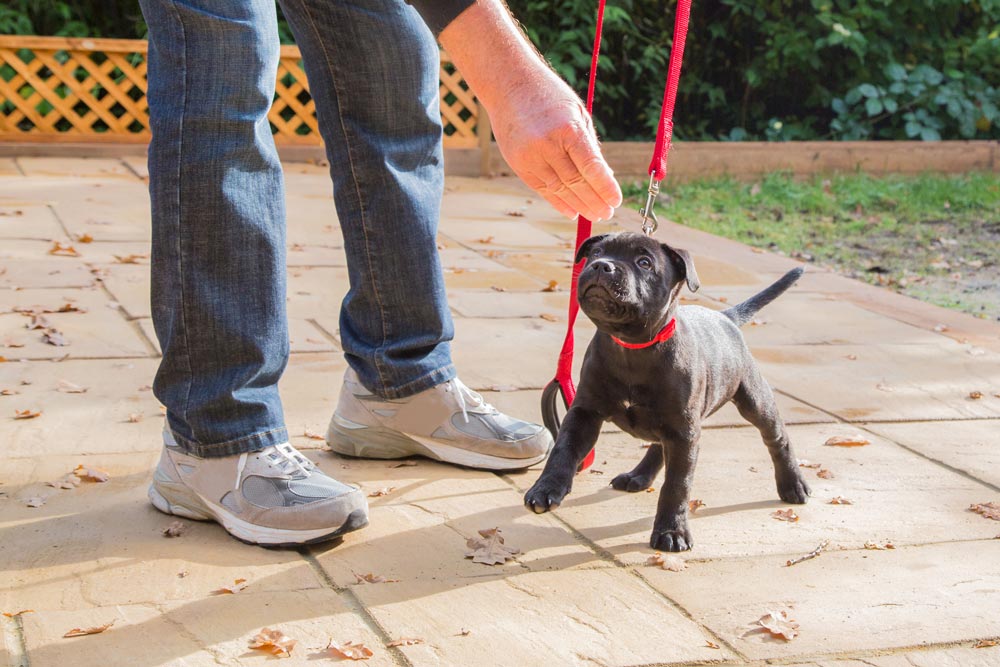
Using a leash during puppy training has several benefits and uses. Here are a few:
- Leashes allow you to have control over your puppy’s movement and behavior in new or unfamiliar environments. This is especially important for young puppies who are still learning about the world around them and may be more prone to exploring and getting into trouble.
- A leash can help prevent your puppy from running off or getting lost. Puppies are curious and may be prone to running off after exciting sights and smells, which can be dangerous in an unfamiliar area or near traffic.
- Leashes can help you establish yourself as the pack’s leader and establish boundaries with your puppy. This is important for developing a healthy and respectful relationship with your puppy.
- Using a leash can also help you teach your puppy basic obedience commands, such as “heel” and “sit,” as well as socialization skills with people and other animals.
- A leash can also help take your puppy on walks or runs, allowing you to get some exercise while also providing your puppy with mental and physical stimulation.
Overall, using a leash during puppy training can be an effective tool for helping your puppy learn and grow into a well-behaved and well-adjusted adult dog.
11. Enroll in a puppy training class.
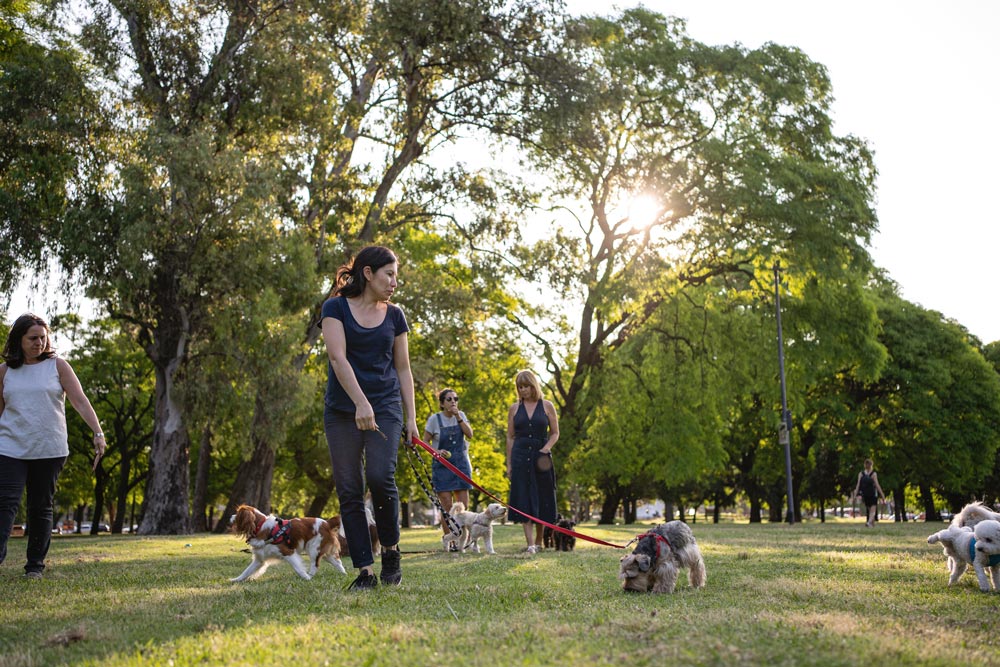
Enrolling a puppy in a training class can benefit both the puppy and the owner. Here are a few:
- Training classes provide a structured environment for puppies to learn basic obedience commands and good manners. This can help establish a strong foundation for future training and behavior modification.
- Training classes can also help puppies learn socialization skills with people and other animals. This is especially important for puppies who may not have had many opportunities to interact with others during the critical socialization period.
- Training classes can help puppies learn how to behave appropriately in various situations and environments, such as at home, in public, and around other dogs.
- Training classes can provide a good source of mental and physical stimulation for puppies, helping to prevent boredom and destructive behavior.
- Training classes can also be an excellent way for owners to learn how to communicate effectively with and train their puppies. Owners can learn about canine behavior and how to use positive reinforcement training techniques to teach their puppies new skills.
Overall, enrolling a puppy in a training class can be a valuable investment in the long-term well-being and happiness of both the puppy and the owner.
12. Seek help if needed.
If you are having problems training your dog or dealing with behavioral issues, seeking professional help from a dog trainer or behaviorist can be valuable. Here are a few reasons why:
- Professional trainers and behaviorists have the knowledge and expertise to identify the root causes of behavioral issues and develop a customized training plan to address them.
- They can provide guidance and support to help you effectively communicate with your dog and establish a positive and respectful relationship.
- Professional trainers and behaviorists can teach you how to use positive reinforcement training techniques to shape your dog’s behavior gently and effectively.
- They can also provide support and guidance for addressing specific challenges, such as aggression, separation anxiety, fear, or other issues.
- Professional trainers and behaviorists can be essential resources for those with limited experience training dogs or who may struggle to resolve specific issues independently.
Suppose you are considering seeking professional help for your dog’s training or behavioral issues. In that case, it is essential to research and choose a trainer or behaviorist who is knowledgeable and experienced and uses science-based, positive reinforcement techniques.
Training your puppy takes patience and consistency, but the effort is well worth it. By following these tips and seeking help when needed, you can raise a well-behaved and beloved family member.

